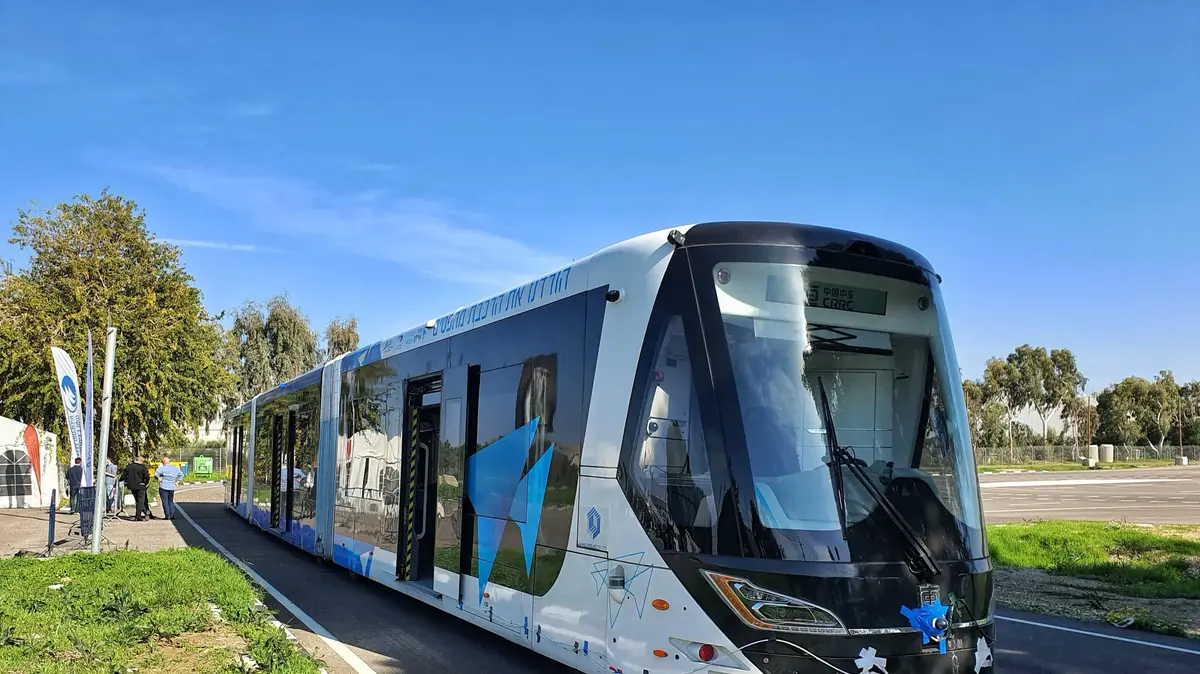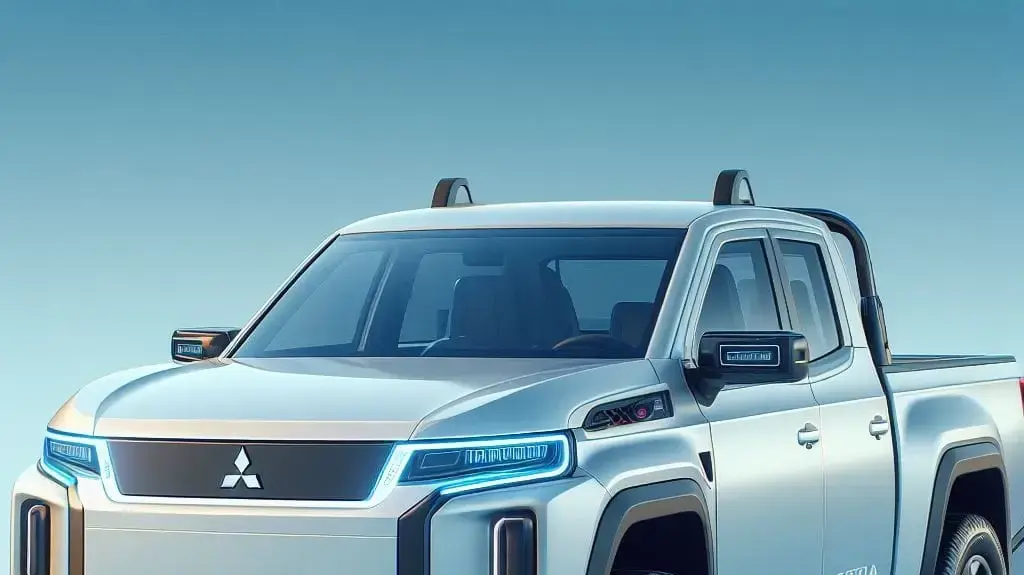Off the rails: the hybridization that may solve the problem of traffic jams in Israel
In view of the public transport crisis that has befallen us in recent years, one of the solutions in the near term is a new means of transport, which is a hybrid between a light rail and a bus and travels on the road infrastructure.
This is an MTEV, in which Ayalon Highways conducted a demonstration trip, but there are many obstacles until it starts operating.
Keenan Cohen
10/01/2022
Monday, January 10, 2022, 2:30 p.m.
Share on Facebook
Share on WhatsApp
Share on Twitter
Share on Email
Share on general
Comments
Comments
Ayalon Highways carried out demonstration trips this morning (Sunday) at its experimental complex in Ashdod, of the new vehicle that may come into use in Israel in the next two years. This is an MTEV - it is a hybrid between a light rail and a bus in that it consists of carriages with a capacity of between 240-500 passengers, but travels on the road infrastructure. However, there are many obstacles until we start seeing him traveling in the country.
In view of the public transportation crisis facing the State of Israel, solutions for it are being made on three different levels;
The immediate, medium and long term.
The latter is in the form of a metro project that will serve the entire Gush Dan bloc, in the interim there will be a light rail on three lines - the first of which is scheduled to start operating at the end of the year - and in the near future, improving existing public transport infrastructure, including adding more public transport routes. Huge parking lots in Rishon Lezion, where tens of thousands of cars will be parked and their passengers will be transported to the employment and leisure centers using high-frequency shuttles.
And in the solutions between the near and medium range, the MTEV should also be integrated.
More on Walla!
What will make it better, and where will you be more satisfied with it?
The Great Public Transport Survey
To the full article
More on Walla!
Dozens of buses and refreshment stations: The IDF's new transportation system is underway
Merav Michaeli: "Bennett is much less committed to rabbis than before"
Does B-Cure Laser Really Help With Pain?
It's the truth
Has a capacity of between 240-500 passengers (Photo: Ayalon Highways)
The MTEV is a means of transportation that landed in Israel in March 2021 and was received accompanied by statements by then-Transportation Minister Miri Regev that it would operate between Tapuach Junction and the center. The MTEV is a hybrid between railcars similar to light rail and a articulated bus. The electric vehicle, which is 30.5 meters long, is expected to accommodate between 240 and 500 passengers in a configuration that will allow a significant advantage over buses. The first advantage is the large passenger capacity, and another advantage is its use of existing infrastructure and an investment that, according to Eyal Bilia, deputy director of technology at Ayalon Lanes, accounts for about a third of those for light rail.
The Chinese MTEV vehicle, made by the Chinese railway giant CRRC, has been operating on five lines encompassing 50 vehicles of its kind in China since it came into use in 2018. However, in the absence of American or European standards - according to which the State of Israel works, it can not yet be put into use. And this is just one of the obstacles that still needs to be overcome until we start seeing it moving around the country.
20 km for every 15 minutes of charging (Photo: Ayalon Lanes)
Some of them, at least the technical ones, are intended to address the experiments conducted in recent months by Netivei Ayalon, which serves as the arm of the Ministry of Transportation's innovative projects in its experimental complex in Ashdod.
Among other things, we will examine the real range that the vehicle is capable of reaching and stands at about 70-80 km. For its charging capabilities that currently stand at time intervals of 20 km for every 15 minutes of charging.
Its ability to operate on certain routes will also need to be considered, ie where it will be able to operate on the existing infrastructure and where changes will need to be made to suit its technical characteristics such as a turning radius of 15 meters, a maximum speed of about 80 km / h or adjustment Its for traveling on slopes of up to ten degrees to a distance of up to 700 meters, which may, for example, restrict it at certain interchanges.
The issue of licensing and driving permits is also an issue in itself as it is not a bus and not a train but a hybrid. Even the issue of its semi-autonomous capabilities will have to pass some approvals before it can be allowed to operate on public roads. The vehicle is actually "driven" by special lane markings followed by an array of cameras and sensors, with the driver in charge of his acceleration and braking only. Above all these also hovers the question of operating the tool. Ayalon routes say that it is too early to understand with responsibility or authority who will operate the tool, but are interested in its capabilities and application possibilities already have.
One of the places where it may fit in is the so-called "brown line".
It stretches between Rishon Lezion, the Alef compound, Road 431, Beer Yaakov and Ramla.
In this axis, significant growth is expected in the time span of a decade and a half from today, such that ordinary buses that are limited not only in their occupancy, but also in the frequency with which they can pass - will find it difficult to meet it.
Other centers are the Netanya Herzliya area, which is outside the range of the light rail, as well as between Ashdod and Ashkelon, as well as uses as shuttles at Ben Gurion Airport, as well as the interest of the IDF bases' transition to the Negev.
The means of transportation that combines a train with a bus has been exposed (Photo: Ayalon Highways)
No statement was made about the then Minister of Transport's statement on the use of a vehicle to connect Samaria to Tel Aviv, but unlike other ministerial statements on transportation solutions such as the "sea shuttles" that were also imposed on Ayalon routes and since then their traces have not been known. The difficulties are more likely to continue to advance in the company.
Ilam Sagi, Deputy Director General of the Ministry of Transportation: "'Rail on Wheels' is a unique and innovative public transportation vehicle that provides a quality travel experience.
"After a comprehensive and in-depth series of experiments that examined safety issues, accessibility for people with disabilities and the transportation characteristics unique to Israel, we enter the next stage, which is mainly standardization and economic and business feasibility testing, to integrate the 'train on wheels' in designated locations around the country."
news
News in Israel
Events in Israel
Tags
Department of Transportation
Ayalon lanes
bus
a train






